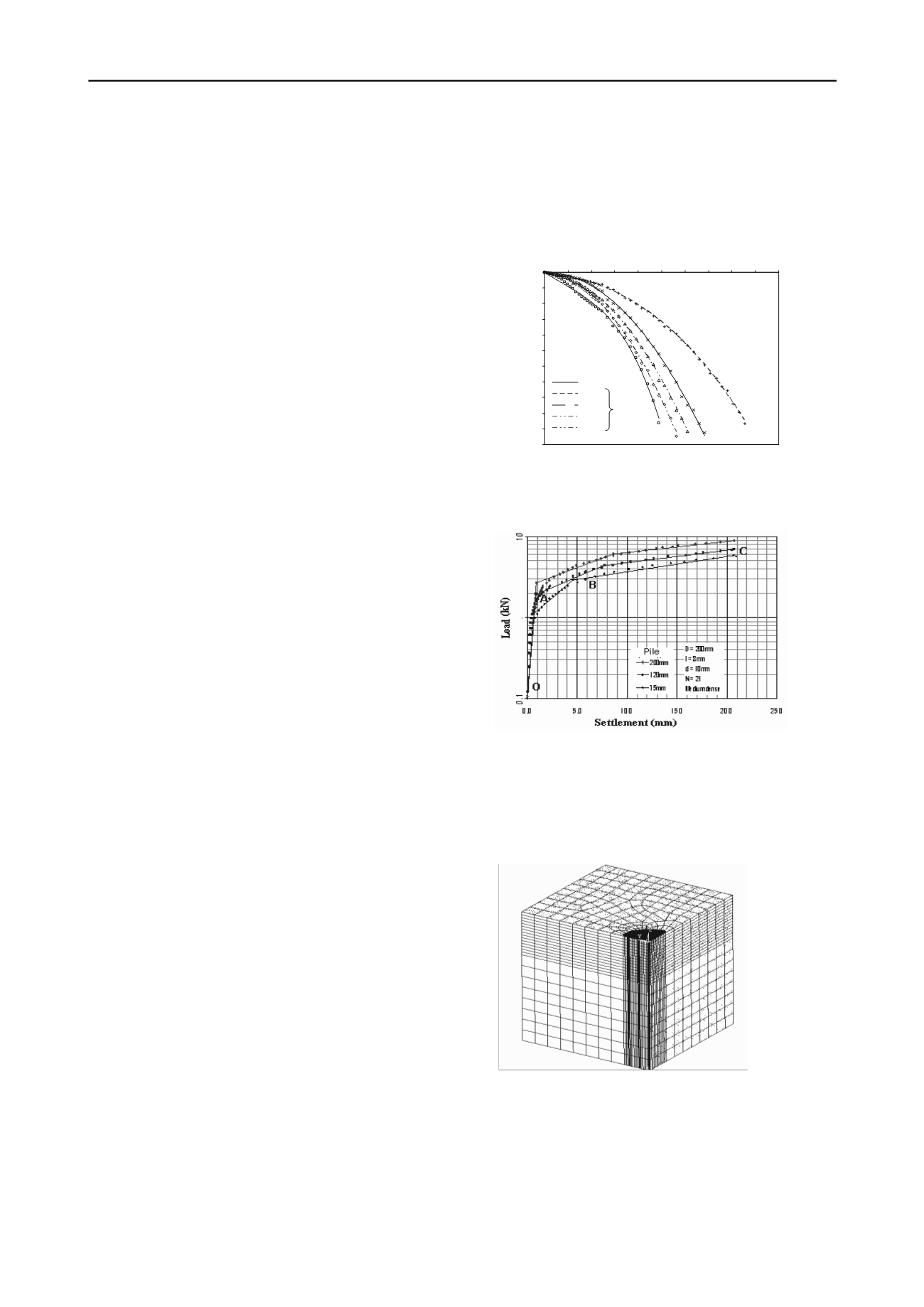
2672
Proceedings of the 18
th
International Conference on Soil Mechanics and Geotechnical Engineering, Paris 2013
It is always recognized in geotechnical engineering that the
most difficult part is the evaluation of the in-situ parameters
particularly the elastic modulus. In most of the cases, such
parameters are obtained either from laboratory tests or from
standard correlations between tests like SPT and Es values,
which can affect the accuracy of results. However over the past
few years there is a considerable shift from the laboratory
testing to in-situ testing and this has led to the use of the results
from in situ tests such as CPT and pressuremeter tests
extensively to determine the stress strain characteristics and
essential parameters like the in-situ elastic modulus of the soil
over the length of the pile. A well tried procedure for predicting
such parameters along with the shaft friction development has
been published by Roger Frank et al (1991) using pressuremeter
tests. Therefore it was felt necessary to study whether such
predictions can be used to evaluate the numerical details such as
the number of piles, length, diameter, and layout required for
the design of the piled raft.
0
2
4
6
8
10
12
14
16
18
20
22
0 1 2 3 4 5 6 7 8 9 10
LOAD, kN
SETTLEMENT,mm
PLAINRAFT
200 mm
120 mm
100 mm
75 mm
d = 10mm
t = 8mm
N= 21
R.A. = 36º
D= 200mm
Bed = MD
Piled raft
Pile length
3. SCOPE OF WORK
With the above in mind it was decided to study the various
options available to idealise the piled raft model which would
be amenable for a simple numerical procedure and will give the
load settlement, settlement reduction and load sharing behaviour
of the piled raft. Further in order to evaluate the elastic modulus
and other parameters over the pile depth various in-situ test
options were also studied. It was found that the equivalent pier
approach would be the most suitable approach for modelling the
piled raft. The paper presents the details of the study and the
conclusions of the study.
Figure 1. Load-Settlement Response of Circular Piled Raft
with Various Pile Lengths
4. THE STUDY
In the design of piled raft the requirement is the settlement
reduction and the data for the design is the load shared by the
raft and the pile group. It is only from the group capacity
required, the number of piles required, diameter and the length
can be evaluated. In order to study the load settlement response,
a series of 1g small scale model tests were carried out on
circular and square shaped piled raft placed on sand bed. Poorly
graded sand was rained in pre-calibrated manner so that the
required densities could be achieved; the tests were carried out
on unpiled raft, free standing pile group and piled raft.
Extensive parametric studies were also carried out but the
presentation is restricted to the load settlement and load sharing
response typically for circular piled raft under medium dense
bed condition. The studies showed that the performance of the
piled raft was identical in all the other cases. Details of the
models test set up and other details are presented elsewhere
(Balakumar etal., 2005)
Figure 2. Characteristic Response of Piled Raft
5. LOAD SETTLEMENT AND LOAD SHARING
RESPONSE.
Figure 3. Finite Element Mesh of a Circular Piled
Figure 1 presents the load settlement response of circular piled
raft with varying pile lengths and and figure presents the
charecterised form of the load settlement response.It is clearly
seen that at any given settlement the load taken by the piled raft
is more than the unpiled raft for the corresponding settlement.It
is seen that the load taken by the piled raft with pile length of
200mm is far higher than the other lengths namely
75mm,100mm and 120mm. The typical characterisation curve
of the piled raft shown with various pile lengths are given in
Figure 2 for a pile diameter of 10 mm, which shows that
irrespective of the pile length, the behaviour has three phases.
Although the settlement up to which the linear elastic stage
(portion OA of the curve) remains same as 1mm, the load
corresponding to this varies. As can be seen at higher length the
linear behaviour extends nearly upto 30% of the load taken by
the piled raft corresponding to settlement equal to 10% of the
pile length. The second stage of the curve AB is the stage where
the behaviour tends to become elasto- plastic, which extends up
to a settlement level 9 mm for 200 mm long pile, 7.5 mm for
120 mm long pile and 4.5 mm for 75 mm long pile.
To have better understanding on load sharing between the
raft and pile group of piled raft, three dimensional nonlinear
analysis was carried out using ANSYS code. Only quarter
model of piled raft was analysed taking advantage of the
symmetry (Figure 3).
The bed density was kept as medium dense with φ = 37.5°
and dry unit weight = 15.5 kN/m3. MISO material model was
used for the soil. The continuum was modelled using solid 45
elements with three degrees of freedom at each node. In the
analysis the bed dimensions were kept same as that of the model
tested in the laboratory. The raft and piles were also modelled as
solid 45 elements in order to maintain the elements


